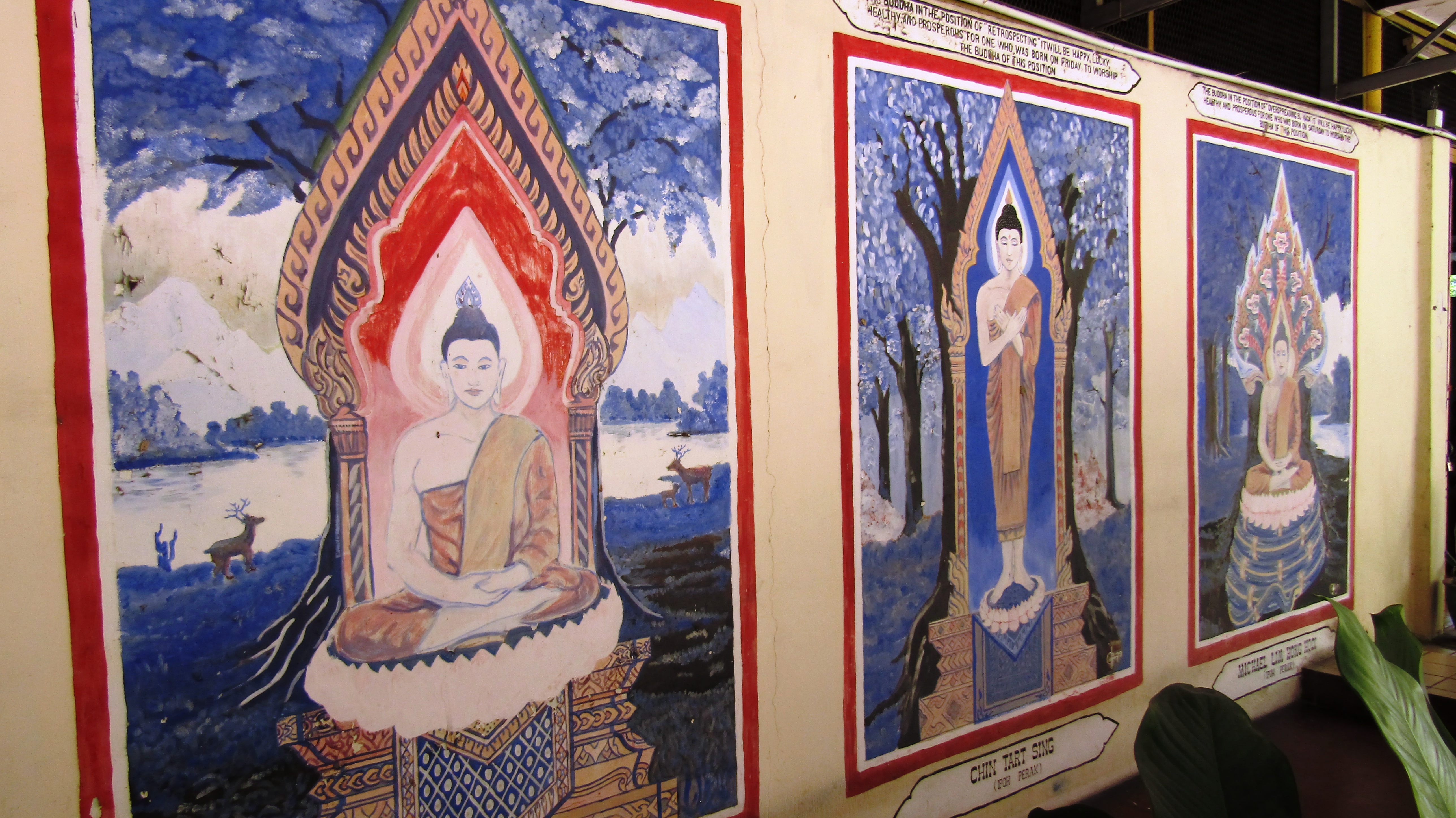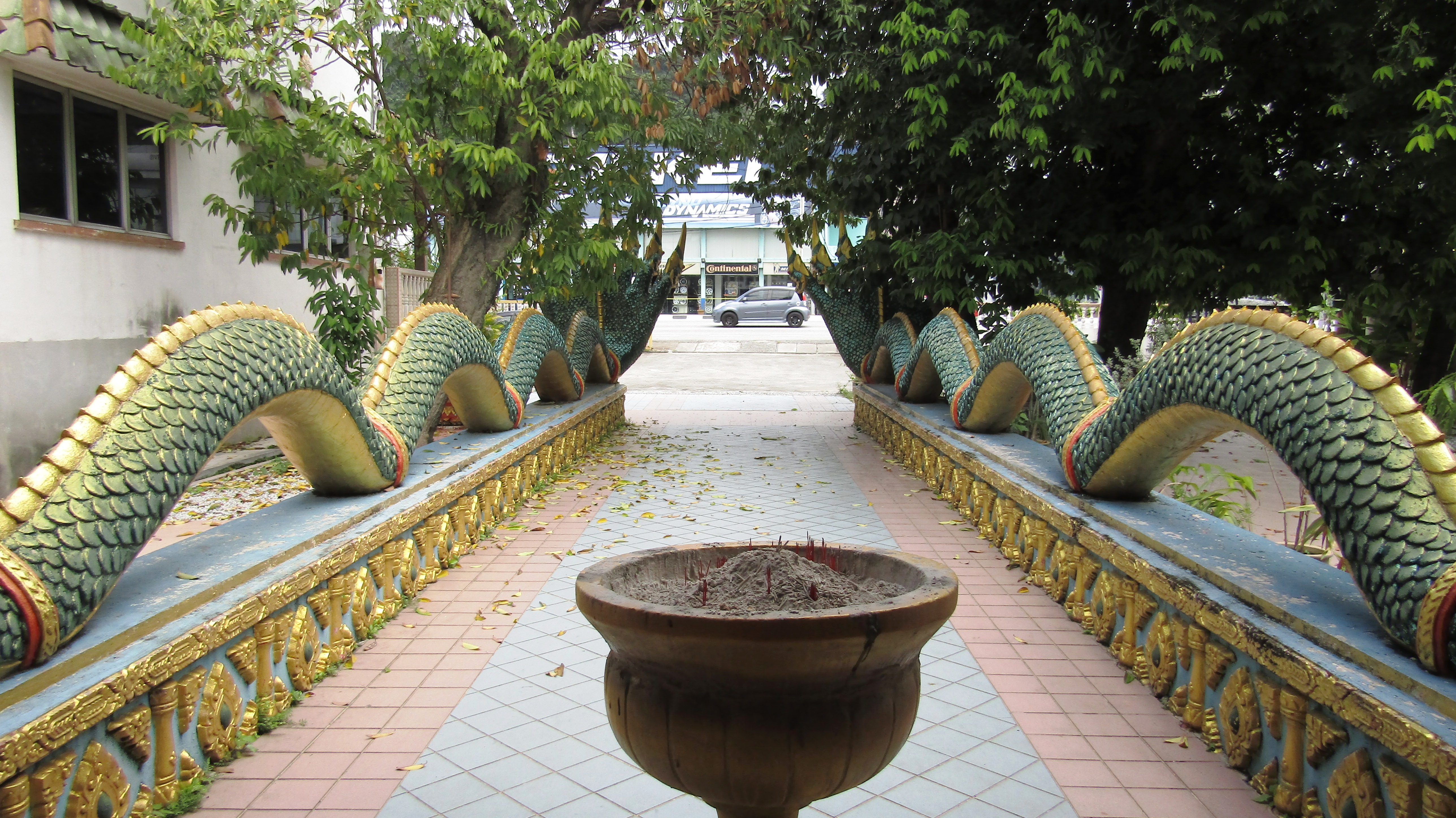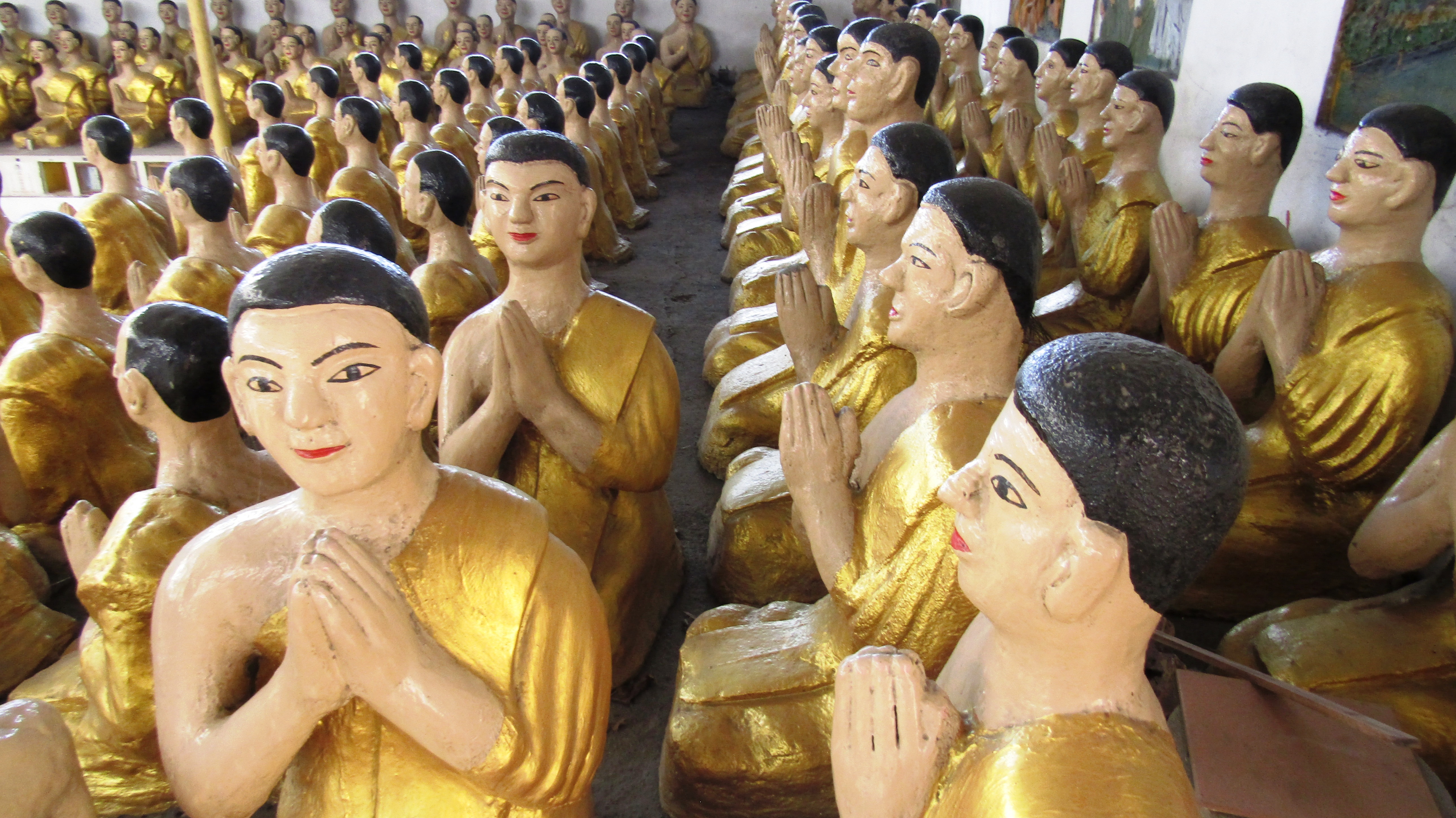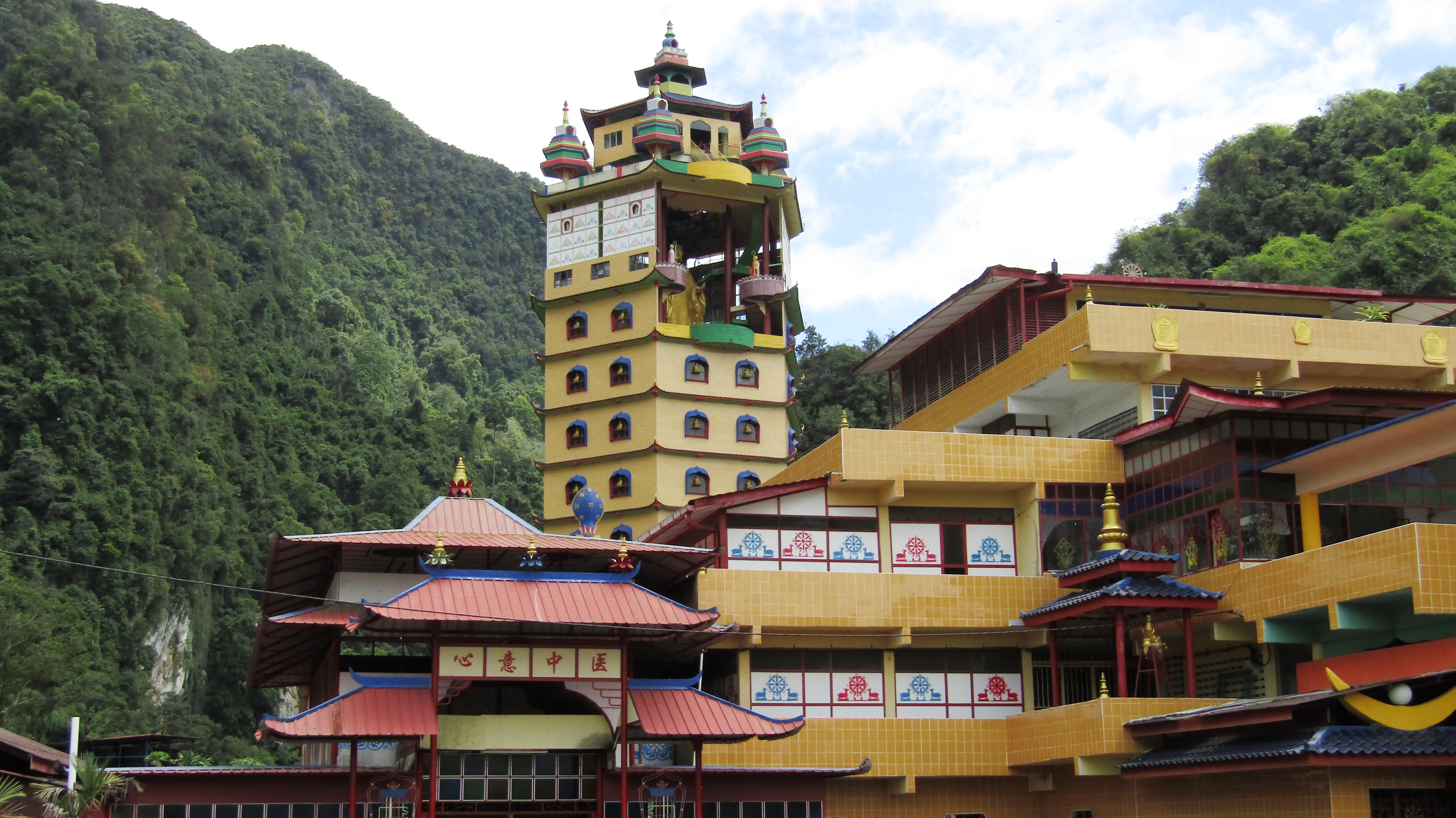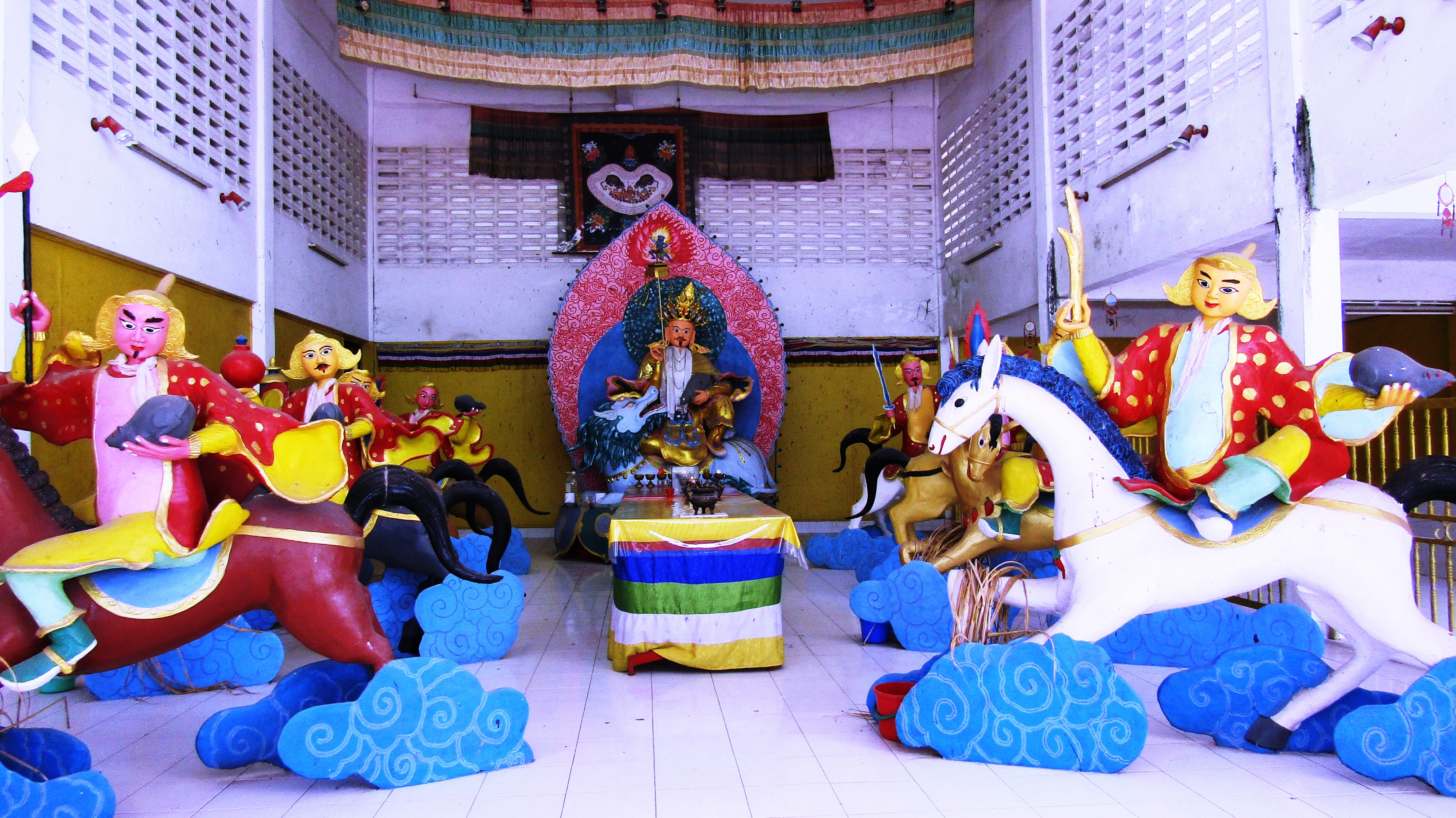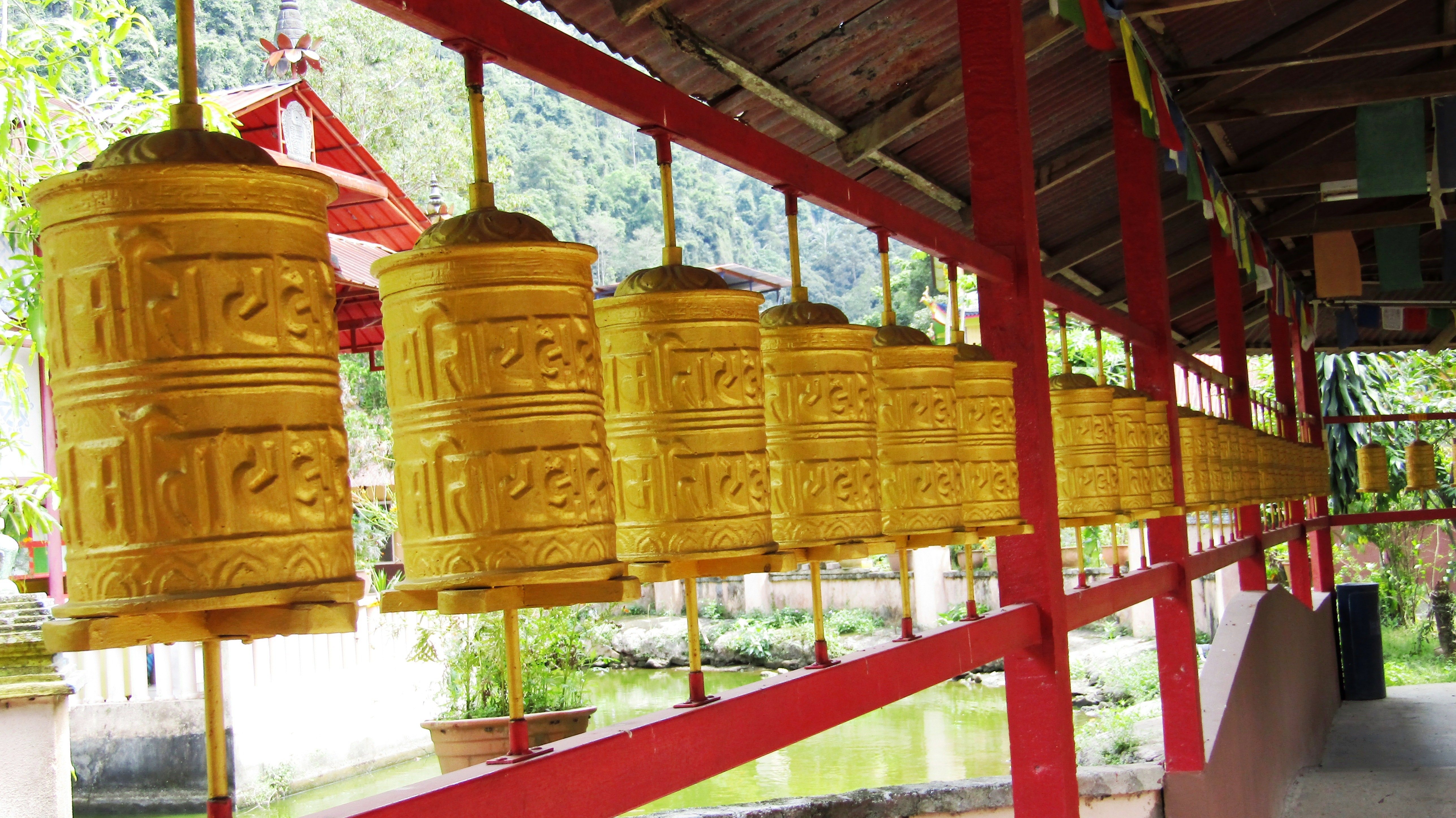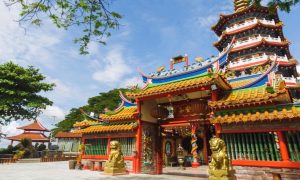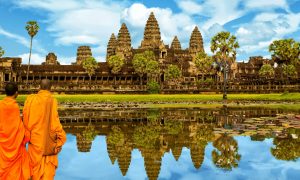Cave temples in Ipoh are popular with tourists, but two lesser-known places of worship offer equally interesting diversions for a few hours. They are the Mekprasit Buddhist Temple and Enlightened Heart Tibetan Buddhist Temple.
Mekprasit Buddhist Temple
The most outstanding feature of Mekprasit Buddhist Temple is the twin seven-headed phaya naga or serpents that form a balustrade along a pavement leading to its entrance. According to Thai folklore, this mythical creature lives in the Mekhong River and its estuaries. The serpents symbolize a bridge linking earth to heaven.
Inside, three sides of the hall are taken up by hundreds of statues depicted as wearing saffron robes. Murals on the walls narrate the milestones in Lord Buddha’s life from his birth till death. An adjacent building serves as a preaching hall and library. Mekprasit Buddhist Temple is located at Jalan Kuala Kangsar opposite the Nissan Service Centre across the road.
Enlightened Heart Tibetan Buddhist Temple
Part of the fun of travelling to Enlightened Heart Tibetan Buddhist Temple is passing the village of Tambun which is famous for its pomelos. They resemble giant grapefruits and make excellent thirst-quenchers. A slip road after the police station leads you through a pomelo plantation to the temple.
Here, the main building is connected by two sheltered walkways to a thirteen-storey pagoda and a gazebo. The short upturned roof eaves and a repeating colour scheme of yellow, blue, green, red and white give the place of worship an exotic feel. The place is deserted on most days except for Wesak Day and Medicine Buddha Puja.
The main prayer hall is filled with statues of Hindu and Buddhist deities. A sideways staircase ascends to the first floor where the Tibetan God of Wealth is enshrined. The next room adjacent to the prayer hall is taken up by huge vases and images of fairies.
From here, a left walkway lined with prayer wheels on both sides leads to a gazebo. Every prayer wheel is inscribed with a mantra. Buddhists believe that turning the wheels is equivalent to reciting the mantras.
Another walkway takes you to a 13-storey pagoda crowned with an upper stupa and six lower stupas. Two staircases lead to the upper levels. The view from ground level reveals a stunning symmetric pattern formed by colourful hexagons. Space seems to be put to waste as many of the floors are empty.
At the top level, you can almost see eye-level to a giant statue of Buddha in a separate temple tucked on the slopes of a limestone outcrop. The climb takes 30 minutes and you’re rewarded with views offering a different perspective of faraway Ipoh.



